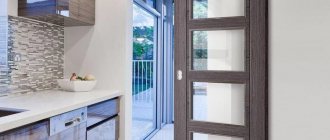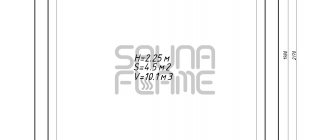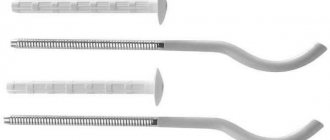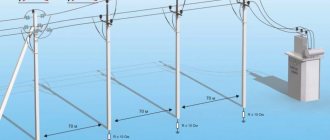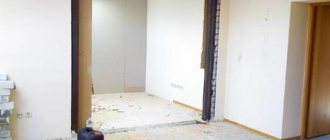In this article we will look at the dimensions of a bathroom for the disabled. According to modern legal requirements, it must meet those parameters that are necessary for normal self-service of people with disabilities without assistance.
If we are talking about public institutions, then this premises is equipped in accordance with all legal standards. All items that are in the bathroom and equipment must meet all GOST requirements, be safe, strong, and comfortable.
What should be the size of a bathroom for disabled people?
Premises requirements
The space intended for the bathroom should be so spacious that it would not be difficult for a person who is in a wheelchair or moves with the help of crutches to stay in it.
It is very important to pay attention to the size of the door to the bathroom for the disabled - it should be wide, there should be no high thresholds. The permissible lift value is 2.5 cm.
Open engineering communications are reduced to a minimum. For these purposes, they are laid under the tiles, or a plasterboard box is created around them.
The room itself should be well lit. It is necessary that there be enough light sources so that even people with visual impairments can easily navigate in space.
The location of all elements of the bathroom must take into account the comfortable movement of a person with disabilities, including in a wheelchair.
Bedsores in patients
Perhaps someday they will come up with a reliable way to prevent bedsores in patients - special beds will appear, effective devices will be invented... In the meantime, except for an inflatable rubberized mattress with a corrugated surface and electric heating, which is not so easy to buy, there is almost nothing to prevent bedsores, and they remain simply a disaster for bedridden patients. It is not always possible to avoid them even with ideal care. Bedsores in patients appear against the background of a sharp weakening of the body, most often in areas of the skin exposed to body pressure (on the area of the sacrum, shoulder blades, elbows). The first signs of bedsores in patients are pale skin followed by redness, swelling and peeling of the epidermis. If you do not pay attention to this in a timely manner, blisters may appear, and then skin necrosis.
To prevent bedsores from occurring or to occur as late as possible, turn the patient several times a day, remake the bed in the morning and evening (there should be no bumps on the mattress, and no folds or crumbs on the sheets), wipe the skin with one of the disinfectant solutions. For seriously ill patients, when they are lying on their back, place an inflatable rubber circle placed in a pillowcase under the sacrum, so that the sacrum is above its opening.
Every time you make the bed, do not forget to examine the patient’s body, especially those places where bedsores most often occur.
If you notice reddened areas, rub the skin with a dry towel to improve local blood circulation. If possible, use quartzing. The doctor will tell you how to do this and for how long. Wash reddened skin with cold water and soap, then wipe with alcohol and powder. If a bedsore does appear, apply a sterile cloth moistened with a 1% solution of potassium permanganate to the open wound. Change the bandage 2-3 times a day.
As the wound is cleansed, you can switch to ointment dressings with syntomecin emulsion, with Vishnevsky ointment.
L. S. ZALIKINA, Candidate of Medical Sciences, head of the course of general nursing, Department of Propaedeutics, MMA named after I. M. SECHENOV
Popular articles
- Rinsing the nose with salt water
- How to do an enema correctly
- Should you take medications before or after meals?
- How to make a compress correctly
- How to place jars correctly
Bathroom size for disabled people
In public toilets, including bathrooms in public buildings, at least one specialized stall for wheelchair users should be provided.
The dimensions of the cabin for disabled people in the bathrooms should be as follows:
- depth – 1.8 m, width – 1.65 m;
- door leaf width - at least 900–950 mm (in the absence of technical capabilities, the minimum acceptable is 800 mm);
- for people with limited mobility, it is necessary to place toilets from floor level to the top of the seat at a height of no less than 450 mm and no more than 600 mm;
- the doors must have locking systems - height 110-130 cm from the floor level;
- there should be a bell button near the door or next to the toilet - at a height of 0.85-1.1 m;
- the diameter of the handrails is from 3 to 5 cm (the most convenient is 4 cm);
- the distance between the wall and the handrails is at least 4 cm (6 cm is best). The dimensions of the bathroom for the disabled must be strictly observed.
Click on the required element and learn how to ensure its accessibility:
| No. | Name | Accessibility principle | Options | TK | Price | Video |
| 1 | Interior of the bathroom | To ensure unhindered maneuvering of a person in a wheelchair. Access to the toilet, washbasin and dryer. | A universal public restroom stall must have plan dimensions, m, no less than: width - 1.7 m, depth - 2.2 m, door width - 0.9 m. The dimensions are relevant if the toilet is located to the right or left of the entrance. clause 6.3.3 SP 59.13330.2020 | |||
| 2 | Folding grab bar for toilet (with paper holder) | Can be used for both a support person and a wheelchair user. For a wheelchair user, it reclines when transferring from a wheelchair to the toilet. For the blind - a reference point for determining the location of the toilet. | It is made of stainless pipe 30-50 mm, has a strong attachment to the floor surface. When tilted up, it has a lock in the upper position. Equipped with a toilet paper holder. It has a height of 0.85 m from the floor level, is installed to the toilet from the entrance to a wheelchair, clause 6.3.3 SP 59.13330.2020, clause 8.3 SP 136.13330.2012, Appendix G GOST 51261-2017 | |||
| 3 | Toilet for MGN | Special toilet for MGN with automatic flushing or push-button control. | Toilet bowls should be used that have back support, a height of 0.45-0.5 m and a length of 0.7 m, and also equipped with an automatic flush system or push-button control clauses 6.3.3, 6.3.9 SP 59.13330.2020 , clause 8.13 SP 136.13330.2012 | |||
| 4 | Wireless help button | Designed to help a person with a disability in the bathroom. | Designed to call staff if a person needs help in the bathroom. clause 5.4 table 6.1 SP 31-102-99, clause 6.3.6 SP 59.13330.2020 | |||
| 5 | crutch hook | For holding 2 crutches or canes in a vertical position at the same time. | On the side of the toilet, a space of at least 0.8 m wide should be provided next to the toilet to accommodate a wheelchair, as well as hooks for clothes, crutches and other accessories. clause 6.3.3 SP 59.13330.2020 | |||
| 6 | Wall-mounted support handrail with safety ends | For the blind - a guiding element using tactile information. For the supporter - an additional point of support. | Grip diameter 30-50 mm, installation height 90 cm, smooth bending around obstacles, continuity of the handrail along the entire length with smooth junctions with the wall surface at the beginning and end of the handrail. It can be made either from individual pipes or using special handrails. clause 6.3.6 SP 59.13330.2020, clause 4.3.1, clause 5.1.5 GOST R 51261-2017 | |||
| 7 | Touch water tap | To facilitate the management of water supply by people with disabilities, without making additional efforts and performing unnecessary actions. | A non-contact sensor faucet is installed on the surface of the sink. clause 6.3.9 SP 59.13330.2020 | |||
| 8 | Rotating mirror for MGN | To allow a wheelchair user to use the mirror due to the limited reflection of a standard mirror in its accessibility zone. | Installed above the sink, has a rotating mechanism and an adjustment knob for adjusting the reflection angle, accessible for a wheelchair user. clause 8.10 SP 136.13330.2012 | |||
| 9 | System "Available Entry" | To provide comfortable access for people using crutches, canes and wheelchairs. The door opens automatically when you press a button. | The system provides mechanical control of the door and is activated when a button is pressed. The buttons have a tactile effect using the Braille system for identification by a blind person. It is recommended to use sensors for automatic door control. clause 6.1.7 SP 59.13330.2020 | |||
| 10 | Sink support rail | For the blind - a guiding element. For a supporter there is a necessary fulcrum. | In bathrooms and other common areas where washbasins are installed, handrails are provided to support disabled people when using washbasins Appendix G GOST R 51261-2017 | |||
| 11 | Touch liquid soap dispenser | To make it easier for people with disabilities to control the supply of soap, without putting in extra effort or performing unnecessary steps. | The touch-sensitive liquid soap dispenser is installed on the surface of the sink. clause 6.3.9 SP 59.13330.2020, clause 9.13 SP 136.13330.2012 | |||
| 12 | Tactile mnemonic diagram of a bathroom | For preliminary exploration of the toilet space in order to move independently in the toilet without an accompanying person. | The mnemonic diagram is made in relief using the Braille system. Installation height is 1.2-1.6 m, located on the wall at a distance of 0.1-0.5 m from the edge of the door on the door handle side. clause 6.3.6 SP 59.13330.2020, clause 8.16 SP 136.13330.2012 | |||
| 13 | Door size | To provide access to the bathroom for disabled people in wheelchairs. | The width of the doorway must be at least 0.8-0.9 m in clearance. clause 6.1.5 SP 59.13330.2020 | |||
| 14 | Contrasting door leaf to the wall | To facilitate doorway identification by visually impaired people and people with cognitive disabilities. | Contrasting color combinations should be used in relation to the equipment used: door-wall-handle. clause 6.2.23, 6.4.1 SP 59.13330.2020 | |||
| 15 | Tactile pictograms along the path of movement | Ensuring easy identification of the toilet, as well as visibility of the route of movement. | They have a tactile effect and are installed at a height of 1.2-1.6 m from the floor level. The next icon is installed within the visibility range of the previous indicator. clause 6.3.6, 6.5.1 SP 59.13330.2020 | |||
| 16 | Wall-mounted support handrail with safety ends | For the blind - a guiding element using tactile information. For the supporter - an additional point of support. | The grip diameter is 30-50 mm, the installation height is not less than 0.85 m, smooth bending around obstacles, continuity of the handrail along the entire length with smooth junctions with the surface of the walls at the beginning and end of the handrail. It can be made either from individual pipes or using special handrails. clause 5.4 GOST R 51261-2017, clause 6.2.12, 6.3.3 SP 59.13330.2020 | |||
| 17 | Ergonomic handle | For the possibility of use at a height convenient for hand gripping by disabled people of various categories. | The location and design of mechanical and manual door handles must be easily accessible on both sides, regardless of the position of the door. clause 6.4.2, 6.4.3 SP 59.13330.2020, clause 9.12, Table A2 SP 136.13330.2012 | |||
| 18 | Intelligent door control system "Accessible entrance" | To provide comfortable access for people using crutches, canes and wheelchairs. The door opens automatically when you press a button. | The system provides mechanical control of the door and is activated when a button is pressed. The buttons have a tactile effect using the Braille system for identification by a blind person. It is recommended to use sensors for automatic door control. clause 6.1.7 SP 59.13330.2020 | |||
| 19 | Tactile-sound sign | To identify the bathroom to all visitors. The tactile-sound effect makes it easier for the blind and people with cognitive disabilities to use. | At the doors of sanitary and hygienic premises, on the door handle side, at a height of 1.2-1.6 m, tactile circuits with acoustic elements should be installed. clause 6.3.6 SP 59.13330.2020, clause 10.1.2, table 10.1 SP 136.13330.2012 | |||
| 20 | Wheelchair bumper | To protect the door leaf when opening it by pushing with the lower part of a wheelchair. | The recommended width is 100 mm narrower than the door leaf, height is 300 mm. Installation at a height of 50 mm from the bottom edge of the door on both sides. Material of manufacture: stainless steel. | |||
| 21 | Adaptive system (queue light display) “Busy-vacant” | The system automatically determines the availability of a sanitary room at a given time. | Equipped with a motion sensor. When driving in a controlled area, the “Busy” information field is automatically activated. Lack of movement for more than 15 seconds will activate the “Free” information board. clause 6.3.9 SP 59.13330.2020 | |||
| 22 | Visual-acoustic system | Allows you to transmit information visually and acoustically. Relevant for informing all categories of citizens in accordance with the principles of “universal design”. Additionally used to notify about the occurrence of an emergency. | Installed at a height of 1.5-4.5 m from the floor level, connected to the general warning system "SurdoCenter", fire alarm. clause 6.5.3, 6.5.4, 6.5.7 SP 59.13330.2020 | |||
| 23 | Hand dryer | For use by all categories of people with disabilities. | An electric hand dryer should be located at a height of no more than 0.8 m from the floor, in an area accessible to a person using a wheelchair. clause 6.4.2 SP 59.13330.2020, clause 8.10 SP 136.13330.2012 | |||
| 24 | Hook for bags, clothes | For placing outerwear, bags or backpacks. | A space of at least 0.8 m wide should be provided next to the toilet to accommodate a wheelchair, as well as hooks for clothes, crutches and other accessories. clause 6.3.3 SP 59.13330.2020 |
Standards for installing sanitary equipment according to SNIP
Accessible to citizens with disabilities, including those using a wheelchair, are premises that provide the ability to get inside, move around and leave/exit it under normal conditions, as well as use this bathroom and the equipment installed in it, for its intended purpose. Therefore, it is necessary to keep in mind the dimensions of the wheelchair you are using.
Thus, all sanitary facilities accessible to persons with disabilities must have at least one module. In some cases, it is possible to install one universal one, however, subject to the availability of a bathroom for the disabled that meets SNIP standards. Dimensions are important.
When defining accessibility parameters, all the needs of people in wheelchairs are used as a basis. Accordingly, such premises can also be used by capable citizens. In the case of separate and common toilets for women and men, each of them must have at least one accessible node. The number of available nodes should be provided in the following proportion:
- from 2 to 10 – 1 must be accessible to the disabled;
- from 11 – 1 available node for every 10.
Bathrooms for disabled people are not included in the total number of restrooms. This type of premises should not be permanently reserved only for persons with disabilities, but is available for use by all categories of citizens.
Expensive and cheap. What will you choose
On the domestic market, dry toilets used at home are represented by a large number of manufacturers. Among them there are foreign and domestic representatives. Naturally, their products differ not only in cost, but also in quality, and very much so. Therefore, before you go shopping, you should carefully approach the issue of choice. To help you in this matter, let's look at a few of the most popular models.
Thetford model range from Holland and their characteristics
The most widely represented products are from Thetford from Holland. Its model range consists of dry toilets differing in:
- Design and dimensions
- Flush pump type
- Waste tank volume
Their great popularity is due to their excellent performance characteristics, modern design and reasonable cost. A wide variety of models allows each buyer to find the best option.
Next in the ranking are dry closets from the Canadian manufacturer SanitationEquipmentLimited (SEL). They are distinguished by high quality products, but have a limited range of models.
Let's watch a video about the popular Thetford brand:
French products from Campingaz have also proven themselves well. Its brand produces compact dry toilets that are best suited for trips to the country. They have a higher cost, which somewhat limits the demand for them.
In addition to products from foreign manufacturers, there are also dry closets from local companies on the market. But for the most part, they are more reminiscent of a bucket with a lid than a modern portable device. And, despite the low cost, such products are not in great demand due to their low quality and external data.
Toilets
The axis of the toilet bowl, which corresponds to the axis of the seat, should be located at a distance of 0.5 m from the tank/back and 40 cm from the side rail. The immediate height of the seat should not be more than 47 cm +/- 1 cm. In other types of sanitary facilities, it is customary to install the toilet seat at a level of 39 cm +/- 1 cm. For safe and full use of sanitary cabins for disabled people, it is strongly recommended to install safety rails. The distance from the support to the floor should be 75 cm.
Typically, specialized toilets are installed in the bathroom. They are distinguished from ordinary ones by their slightly modified shape and height. If it is not possible to install a special one in the toilet, then at a minimum it is necessary to raise the usual one using a constructed podium.
It is best that the toilet is not located too close to the corner, and the distance between the device and the side wall should be at least 75 cm. The flush button for a disabled person should be convenient and located in direct access for him, for example, on the floor or wall.
If a urinal is installed in a men's toilet, then in this case it is placed at a height of 0.4 m from the floor. A special handrail is installed near it.
What should a toilet be like for the elderly?
The main task of a dry closet intended for elderly people is to solve the following problems of the user: poor coordination of movements, physical inability to overcome the distance to the toilet and age-related bowel incontinence. If reviews of the Eurocompact dry toilet, which effectively serves a family of three or four people, focus on the ability to recycle about 95 percent of incoming waste, then a toilet for the elderly should only provide the opportunity for one user to relieve himself as close as possible to his place of permanent residence. A toilet for older people should be mobile and safe.
That is why, structurally, a dry closet for the elderly is the same toilet, but autonomous due to its compact size and lack of connection to sewer lines. To increase the level of safety for users who have impaired coordination of movements, and to facilitate nursing work, such toilets can be equipped with handles, supporting backrests, folding footrests and transport wheels.
Accessories
The following accessories must be present in the sanitary room for a disabled person:
- hooks;
- trash cans without lids;
- holders of soap, toilet paper rolls, hygiene bag dispensers;
- hand dryers, which are installed at a height of 40 and 130 cm from the floor level;
- a mirror, the bottom edge of which should not be located at a height of more than 105 cm.
Design features
These are two plastic tanks that are combined into a single structure. The upper one is filled with water used for flushing, and the lower one is a container for collecting waste, which is equipped with a sealing valve, which does not allow liquid and odors to escape.
chair toilet with dry closet
The design also includes:
- Flush pump
- Toilet
- seat
- Lid
- Waste level indicator
A dry closet is a good purchase for a home where elderly or disabled people live who are unable to use the services of regular sanitary rooms.
Today there are models, for example HO11A, that can be built directly into a wheelchair, which is convenient for those who cannot move independently. The dry toilet for patients has a seat with a hygienic hole for a bedpan and an overhead soft seat, which allows it to be used as a regular wheelchair. It also comes with a removable bucket with a lid.
Interior decoration
For the interior decoration of a bathroom for the disabled, according to SNIP standards, it is best to use matte, non-slip tiles. Materials used for flooring must be non-slip. This can be embossed or anti-slip tiles. Otherwise, you should use an additional coating, for example a special rubber flooring.
Since equipping a sanitary facility involves installing handrails, initially when designing a room you need to think about where exactly they will be attached. If the choice fell on the walls, then plastic panels cannot be used for their cladding. You can simply paint it with a special waterproof paint, the use of which is allowed for use in bathrooms.
Plumbing requirements
For disabled people, plumbing has a special structure. First of all, it should be as safe and convenient to use as possible.
Today you can purchase specialized sanitary items that meet all regulatory requirements for use by people with disabilities. However, in public buildings it is permissible to use traditional devices, providing the toilet with everything necessary.
Guidelines for adapting other zones:
Requirements for adaptation for people with disabilities are specified in a number of legal, regulatory and technical documents. Among them: Federal Law No. 181-FZ “On social protection of people with disabilities in the Russian Federation”, Code of Rules 59.13330 “Accessibility of buildings and structures for people with limited mobility”, Code of Rules 140.13330 “Urban environment. Design rules for people with limited mobility."
Corridor Assembly hall Sidewalk and pedestrian crossing Recreational area Classroom Entrance area
Sink
A sink that will be used by a person with limited physical capabilities must also be installed in accordance with the regulatory requirements of SNIP. Its height should not exceed 80 cm from the floor level. The shape of the sink should be such that a person in a wheelchair can drive close to it. It would be good if there was a special recess in the washbasin provided for this purpose. In addition, it is desirable that the space between the side wall and the washbasin be at least 20 cm. If desired, you can install a special sink. Not only does it have a convenient shape, it already has special handrails built into it and often has a function for adjusting the tilt of this device.
Handrails for disabled people in the bathroom - dimensions
There should be several of them in the sanitary room for people with limited mobility. In order for it not to be difficult to use the toilet, it is necessary that two special handrails be installed next to it, which can be mounted in the floor, wall or directly in the toilet itself. One of them is reclining. Otherwise, you will not be able to transfer to the toilet from a wheelchair.
In addition, the installation of handrails for disabled people in bathrooms according to size is necessary next to the shower stall and sink. In this case, their height and location from the floor level must be observed. This indicator, according to SNIP standards, is 75 cm. These fastenings must be reliable and selected taking into account the fact that significant pressure will be exerted on them.
What is the size of a bathroom with a shower for the disabled? More on this below.
Technique for transferring from chair to toilet
Put the brakes on the seat.
Stand in front of the patient. Your knees should be bent and your back straight. Place one hand under the patient's shoulders and the other under his hips. Don't twist your back at the waist. Tell the patient that you are going to put your hands under his arms, and he should put his arms around your waist or shoulders, but not around your neck. If the patient hugs you by the neck, he may harm you, or you and the patient may fall, losing your balance. Ask the patient to raise his arms, and you put your hands under his arms, leaning forward, he should hug you by the shoulders or waist. When your patient is ready to move, his buttocks should be on the edge of the chair so that he can maintain balance as you move his body weight forward. The patient's feet should be on the floor, and the heels should be slightly turned in the direction of movement. This is to prevent his legs from getting tangled when he turns his body to sit on the toilet. Place your leg, which is further from the chair, between the patient’s knees with your knee facing him, and the other leg in the direction of movement. Bend your knees, tighten your abdominal and buttock muscles, and keep your back straight. Stand as close to the patient as possible. Use reliable support, hold the patient close to you, keep your back straight, lift the patient smoothly, do not jerk or turn him over. Keep your head on the same side of the patient's head as the toilet. Don't put pressure under his arms. Warn the patient that on the count of “3” you will help him get up. On each count, rock back and forth slightly to create momentum, and on the count of “3,” lift the patient. Turn yourself at the same time as turning the patient's body until he takes a position directly in front of the toilet. Ask the patient to alert you when he feels the edge of the toilet against the back of his thighs.
Gently lower the patient onto the toilet
Bathroom with shower
A shower is an excellent solution for disabled people who have difficulty using the bathroom. In addition, this option may be the most compact, leaving free space in the sanitary room. There are two types of shower cabins:
- Without pallet. This is an ideal option for disabled people who use a wheelchair. However, when arranging it, it is important to take into account some technical features. For example, the drain power must be sufficient to promptly remove the water entering the shower, and the shower partitions must be sealed.
- With pallet. It should be non-slippery and low. To do this, you can use rubberized mats or a tray with a relief coating.
The area of the shower stall for disabled people may vary, but certain standards are also provided here. It is advisable to respect the dimensions of the bathroom for the disabled. According to GOST, it must be at least 150 by 80 cm. It is convenient if a special seat is installed in it. If the shower is intended not only for people with disabilities, then it can be folding. Its surface is covered with a non-slip material.
What to look for when choosing a dry closet for older users
When choosing a toilet for your dacha, reviews of the ecomatic dry toilet or its analogues advise paying attention to functionality, capacity and the degree of waste recycling. For a toilet for the elderly, other factors such as mobility and ease of use are more important
But the capacity of the tray also matters. Thus, reviews of the campa potti xgl dry closet reveal a number of positive characteristics of this Dutch product. But its tank can hold 21 liters of waste, which when full makes it weigh 25 kilograms. And this will require the use of two people when emptying.
So, the choice must be based on the necessary parameters: the capacity of the tray (a recumbent user needs a more capacious vessel than one capable of controlling emptying) and the convenience of the design for placing a person with limited functionality there.
If you read reviews online about a liquid dry closet for the elderly, it will become clear that it is good to have:
- possibility of adjusting the headrest, armrests and backrest;
- simplified access to the container when emptying it;
- the ability to fold down or remove the footrest;
- When using a wheeled toilet model, there must be a brake for the rear wheels.
Shelves and mirrors
There are also recommended layouts for items like shelves, mirrors, towel holders and more. In this case, the mirror is hung in such a way that its lower edge is located approximately at a height of 90 cm from the floor, but no more. Devices for drying hands, holders for toilet paper and napkins, as well as a variety of shelves are mounted on the walls at a height not exceeding 90 cm.
These are the main dimensions of bathrooms for the disabled.
Sanitary requirements for placement
Public bathrooms for disabled people should be located in the following places:
- in squares, streets with large pedestrian traffic, and highways;
- near railway stations, train stations, bus stations and airports;
- metro lobbies and exits;
- in places of public events;
- in the area of locating fairs, large retail facilities, public catering facilities, sports, cultural and entertainment facilities;
- in parks, gardens, boulevards;
- near exhibitions and cinemas.
Clearly readable, illuminated “TOILET” signs should be installed in prominent places, including if it is located in a public building.
We looked at the main dimensions of bathrooms for the disabled according to SNIP.
Washing the patient
Don't forget about this daily procedure! And in case of urinary and fecal incontinence, the patient will have to be washed several times a day, otherwise maceration and inflammation of the skin may occur in the area of the inguinal folds and perineum. Use a warm (30-350) aqueous solution of rivanol or a pale pink solution of potassium permanganate.
To wash the patient, you will need a jug, bedpan, oilcloth, cotton balls, and a holder (this is something like large tweezers, you can buy it at the pharmacy). Place the patient on his back on an oilcloth with his knees bent, under the sacrum - a vessel
Holding a jug of solution in your left hand and a holder with a tampon in your right, gently pour it onto the perineal area. Wash from the genitals to the anus (from top to bottom), then use dry cotton swabs to wipe the skin in the same direction
Wash the patient’s feet once or twice a week, placing a basin of water on the oilcloth in bed.
When caring for a patient, do not forget about the requirements of personal hygiene. Your hands, as well as your clothes, should always be clean, your shoes should be light and soft so as not to create annoying noise. Before serving food, put on a fresh apron and, when removing the bedpan, put on rubber gloves.
Spend 10-15 minutes to wash a light apron and wash your gloves. Place all patient care items in a designated place. Then you will not be nervous at least from the bustle and haste.



